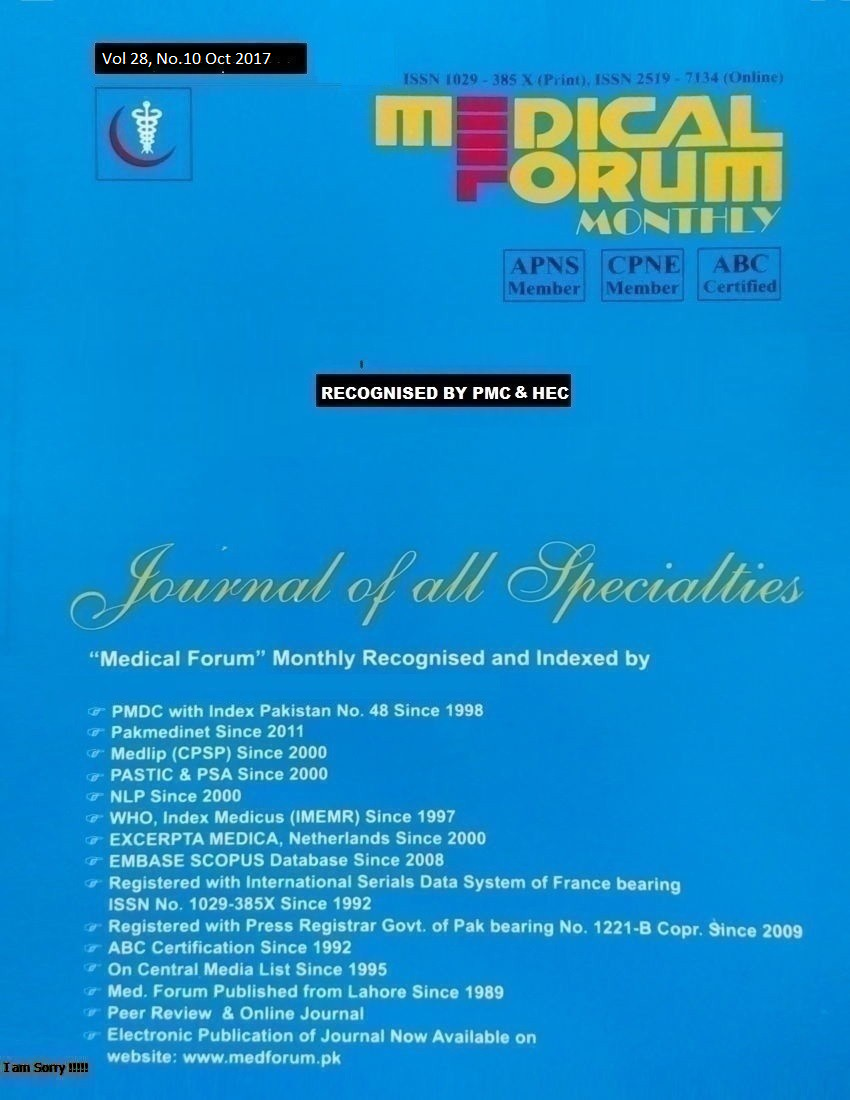
20. Comparison of the Frequency of Billiary Leakage with Clipless Versus Clipped Laparoscopic Cholecystectomy for Management of Cholecystitis
Sana Shahid, Nida Shahid, Rameez Iqbal and Noor Saeed
ABSTRACT
Objective: Compare the frequency of billiary leakage with clipless versus clipped laparoscopic cholecystectomy for management of cholecystitis.
Study Design: Randomized control trail study.
Place and Duration of Study: This study was conducted at the Department of Surgery, Nishtar Hospital, Multan, from June 2016 to November 2016.
Materials and Methods: Sample size of 130 with 65 patients in two each group was calculated with power of study taken as 80%, significance level 5% and taking expected percentage of billiary leakage of 30% with clipped laparoscopic and 10% with clipless laparoscopic cholecystectomy (6). Non probability consecutive type of sampling technique was used to calculate the sample size. A predesigned Performa was used to collect all the data regarding procedure and outcomes. The data was subjected to statistical analysis using computer software SPSS version 23. Age and duration of cholecystitis were the quantitative variables of which mean and standard deviation was calculated. Frequency and percentage was calculated for qualitative variables like gender and billiary leakage. Chi square test was applied to compare the billiary leakage in both groups with P value less than 0.05 taken as significant.
Results: 100% (n=168) patients were included, in this study; divided into two equal groups, 50% (n=84) in each, clipless and clipped respectively.The main outcome variable of this study was billiary leakage. The billiary leakage was noted in 23.8% (n=20) and 44% (n=37) patients for clipless and clipped groups respectively. Significant difference was found between billiary leakage in groups (χ2=7.67, p=0.006). No significant difference was found between billiary leakage and gender (p=0.995), stratified age (p=0.325), duration of Cholelithiasis (p=0.861).
Conclusion: It has been proved in our study that the biliary leakage was statistically significantly higher in the clipped LC for management of Cholecystitis.
Key Words: Billiary Leakage, Clipless Laparoscopy, Clipped Laparoscopy, Cholecystectomy, Cholecystitis
Citation of articles: Shahid S, Shahid N, Iqbal R, Saeed N. Comparison of the Frequency of Billiary Leakage with Clipless Versus Clipped Laparoscopic Cholecystectomy for Management of Cholecystitis. Med Forum 2017;28(10):81-84.
